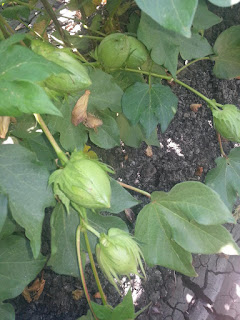Over the years, Bob Hutmacher has visited countless cotton fields across the Valley.
He’ll field a call from a grower asking him to come check out a problem with the crop.
“ I feel like the grim reaper when I walk into a field
and they ask if they have Race 4 fusarium wilt,” he jokes.
 |
| UCCE cotton expert Bob Hutmacher |
“It’s going to be a continuing battle. It’s
difficult to contain,” he told growers attending a recent cotton field day in
Mendota. Identified in 2001 in Fresno-Kings counties area, the nasty soil
disease was identified in four different locations in the San Joaquin Valley
within three years. It has steadily spread northward to the upper San Joaquin
Valley.
Recently, Race 4 fusarium was discovered in West
Texas cotton fields around the El Paso region. Hutmacher suspects it could be
infecting fields in Arizona – although nothing has been confirmed by
agriculture officials.
“It could be a couple years when you detect anything
or it could be 10 years.”
 |
| Race 4 fusarium will wipe out sections of cotton plants. |
“We still don’t know of a crop rotation that knocks
down its survival,” he says. However, the disease appears to be controlled the
year after the field has been left fallow the previous summer. “That actually
knocks down the problem.”
Hutmacher says public research institutions,
government ag agencies and private ag firms need to continue working together
to come up with a solution.
 |
| Cotton plants will wilt and die from the soil disease. |
“Until you get a perfect resistant
variety, the solution is a really resistant cultivar along with
a kind of chemical treatment that is affordable. That will reduce down the
infection rate. I don’t think it will need to be perfect,” he says.
Hutmacher urges growers to contact UC farm
advisors if they see any problems in their fields.
Once growers know they have an infected
field, they can take steps to slow the spread of the disease. That includes
cleaning soil from equipment, limiting the movement of soil and plant debris
from the infected field and planting resistant varieties.
“People have been very good about
working with their PCAs, seed companies and consultants to try to get answers
to know what they are dealing with,” he says.









